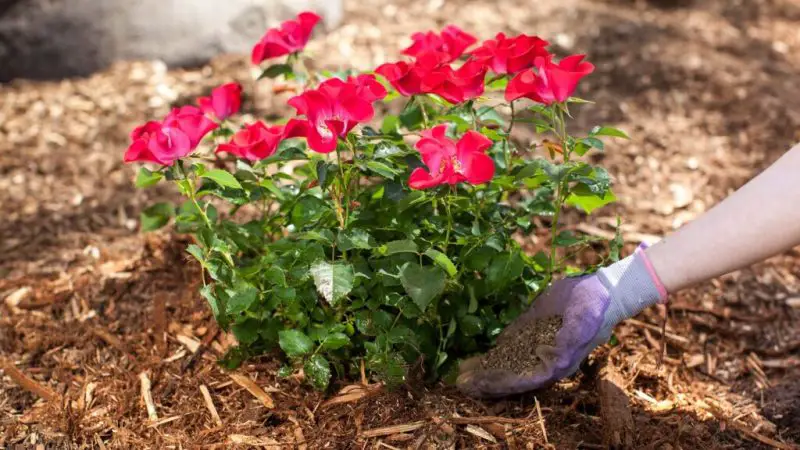Fertilizing roses at the right time is one of the most powerful ways to unlock their full beauty. Roses are beloved for their elegance, fragrance, and timeless charm, but without proper feeding, even the strongest varieties can fail to thrive. Knowing when and how to fertilize makes the difference between a garden filled with a few scattered blooms and one overflowing with radiant color and lasting vitality.
This guide reveals expert insights into the timing and techniques that bring out the best in every rose. From early spring growth to late-season care, fertilization plays a vital role in shaping healthy plants and vibrant flowers. By understanding seasonal needs and applying the right nutrients at the right moment, you can transform your rose garden into a dazzling display that continues to impress year after year.
Understanding the Importance of Fertilizing Roses

Roses are heavy feeders that demand the right balance of nutrients to produce abundant blooms and healthy foliage. Fertilizing at the proper time gives roses the energy they need to grow strong roots, resist disease, and deliver vibrant flowers. Without consistent feeding, even the healthiest varieties can struggle, producing fewer blooms and showing weaker growth. Fertilization is more than just providing food; it is a way of shaping how your roses perform throughout the year.
The nutrients supplied through fertilizer act as the building blocks for every stage of the plant’s development. Nitrogen supports leafy growth, phosphorus strengthens root systems and encourages flower production, while potassium boosts overall resilience and bloom quality. Micronutrients like magnesium and iron also play a vital role in maintaining lush green leaves and preventing common nutrient deficiencies. A rose that receives these essential elements at the right moment will thrive with more color, fragrance, and vitality. Timing, therefore, is just as crucial as the type of fertilizer you choose.
Gardeners who understand the importance of fertilization see roses flourish season after season. Proper feeding encourages repeat blooming, extends the life of the shrub, and ensures your garden remains a showcase of beauty. Neglecting this practice, however, can quickly lead to disappointment. Fertilizer works best when paired with good watering and soil care, allowing nutrients to penetrate deeply into the root zone. By learning when and how to fertilize effectively, you set the foundation for strong, lasting plants that reward your care with stunning floral displays.
The Best Seasons to Fertilize Roses
Fertilizing roses is most effective when timed with the natural rhythm of their growth. Early spring is the prime season to begin, just as buds start to swell and new shoots emerge. At this stage, roses require an extra boost to fuel their rapid development and prepare for their first flush of blooms. Applying fertilizer at this time ensures strong roots, lush foliage, and healthy flower buds. A balanced formula with essential nutrients provides the energy needed for vigorous spring growth.
Summer is equally important for maintaining consistent bloom production. Roses that have already flowered benefit from additional feeding to encourage repeat blooming throughout the warmer months. A midseason application replenishes nutrients lost during the first flush, keeping plants strong and resilient. Gardeners often notice that well-fed roses continue to bloom abundantly while underfed shrubs slow down or stop flowering entirely. Timely summer feeding is the secret to extending color and fragrance.
As the season winds down, late summer or early fall fertilization can help roses prepare for the coming dormant period. Instead of pushing new growth, the goal is to strengthen the root system and improve the plant’s winter hardiness. Fertilizers lower in nitrogen but rich in potassium are especially beneficial at this stage. In colder regions, feeding should stop six to eight weeks before the first frost to prevent tender growth from freezing. By fertilizing thoughtfully throughout the year, you build resilience into your roses while ensuring months of spectacular garden beauty.
Types of Fertilizers for Roses
Organic Fertilizers for Roses
Organic fertilizers are made from natural materials such as compost, bone meal, fish emulsion, or manure. They improve soil structure while delivering essential nutrients in a gentle, long-lasting way. Unlike synthetic blends, organic options feed the soil as much as they feed the plant, creating a healthier growing environment for roses.
One of the biggest advantages of organic fertilizers is their ability to release nutrients slowly, reducing the risk of burning tender roots. They also encourage beneficial microorganisms that support soil health and water retention. Though results may take longer to appear compared to chemical fertilizers, organic feeding builds long-term strength and resilience, allowing roses to thrive season after season. Gardeners who prioritize sustainability often prefer organics because they enrich the ecosystem, improve earthworm activity, and keep chemical buildup out of the soil. Over time, this natural balance supports not only healthier roses but also a more vibrant garden overall.
Synthetic Fertilizers for Roses
Synthetic fertilizers are manufactured blends formulated to deliver precise amounts of essential nutrients like nitrogen, phosphorus, and potassium. Unlike organic options, they act quickly, providing roses with an immediate boost during critical growth periods. This fast action makes them especially useful in early spring when plants awaken from dormancy and require rapid nourishment to support new shoots and budding flowers.
Another advantage of synthetic fertilizers is their predictable composition, which allows gardeners to target specific deficiencies with confidence. However, their fast release means nutrients can leach away quickly, especially in sandy soils, requiring more frequent applications. Overuse may also lead to salt buildup that harms the root system. For best results, synthetic fertilizers should be applied carefully, following package instructions, and paired with good watering practices. When used correctly, they can produce striking, abundant blooms while keeping roses vigorous throughout the growing season.
Slow-Release Fertilizers for Roses
Slow-release fertilizers provide nutrients gradually over an extended period, reducing the need for frequent applications. They are often coated or formulated to break down slowly in the soil, ensuring roses receive a steady supply of essential elements. This consistency helps prevent sudden growth spurts that can stress the plant and instead promotes balanced, sustainable development. In addition, the controlled release reduces the risk of fertilizer burn, making them gentler on tender roots and young plants.
Gardeners often appreciate slow-release options for their convenience, as a single application can last several weeks or even months. They are especially effective in busy gardens where regular feeding may be difficult to manage. Another advantage is reduced nutrient loss, since fewer minerals are washed away by rain or irrigation. Some slow-release blends even include micronutrients such as magnesium or iron, which support leaf health and prevent deficiencies. By supporting steady growth and minimizing stress, slow-release fertilizers help roses remain strong, vibrant, and productive throughout the growing season, making them a reliable choice for long-term rose care.
Liquid Fertilizers for Roses
Liquid fertilizers are highly valued for their fast-acting nature, delivering nutrients directly to the roots through water. They are typically mixed with water and applied during regular watering sessions, allowing roses to absorb essential elements almost immediately. This quick absorption makes liquid feeding especially useful during periods of rapid growth or recovery, when roses require an instant boost to maintain strong stems and vibrant flowers.
Another advantage of liquid fertilizers is their versatility, as they can be used for both root feeding and foliar spraying. Foliar feeding is particularly effective in correcting nutrient deficiencies quickly, as leaves absorb nutrients faster than soil. However, because liquid fertilizers act so quickly, their effects do not last as long as granular or slow-release options. This means more frequent applications are necessary to sustain results. With consistent use, liquid fertilizers provide roses with ongoing support, ensuring healthy growth and continuous blooming throughout the season.
Homemade Fertilizers for Roses
Homemade fertilizers are an affordable and eco-friendly option that many gardeners prefer. Common ingredients include coffee grounds, banana peels, eggshells, and compost tea. These materials are rich in nutrients like potassium, calcium, and phosphorus, which roses need for strong growth and repeated flowering. Using kitchen and garden waste not only feeds your roses but also reduces household waste, making it a sustainable choice. Homemade fertilizers work best when combined with healthy soil practices, ensuring nutrients are properly absorbed.
One of the benefits of homemade fertilizers is their gentleness compared to strong synthetic blends. They release nutrients slowly, improving soil health over time while supporting beneficial microorganisms. For example, banana peels supply potassium for vibrant blooms, while eggshells add calcium to strengthen cell walls. Though results may take longer to appear, homemade options build long-term soil fertility and resilience. With regular application, these natural remedies can keep your roses thriving without relying heavily on commercial products.
How to Apply Fertilizer to Roses
Applying fertilizer correctly is just as important as choosing the right type. Begin by loosening the soil around the base of the rose bush, which allows nutrients to penetrate deeper into the root zone. Spread granular fertilizer evenly, keeping it a few inches away from the crown to prevent burning tender stems. For liquid fertilizers, mix according to package instructions and water the solution directly at the root level for immediate absorption.
Frequency and timing matter when applying fertilizer. Roses typically benefit from feeding every four to six weeks during the growing season, with adjustments depending on the fertilizer type and local climate. Early spring applications should focus on balanced formulas that promote leafy growth, while midseason feedings target sustained blooming. Late-season feedings with lower nitrogen content help prepare plants for winter dormancy without encouraging tender new growth that could be damaged by frost.
Proper watering after fertilization ensures nutrients are effectively absorbed. Granular fertilizers require thorough watering to activate and carry nutrients into the soil. Liquid fertilizers naturally combine water and nutrients, but additional irrigation can help flush nutrients to the roots. Avoid overwatering, which can leach nutrients away, and monitor your plants for signs of deficiency or stress. By following careful application techniques, gardeners can maximize bloom production, strengthen roots, and maintain healthy, vibrant roses throughout the season.
Common Mistakes to Avoid When Fertilizing Roses
Over-Fertilizing Roses
One of the most common mistakes gardeners make is over-fertilizing. Applying too much fertilizer can burn the roots, resulting in weakened plants and excessive leafy growth. While the rose may appear lush, flower production can decrease, and the plant becomes more susceptible to diseases and pests. Over-fertilization disrupts the natural balance of nutrients, which can reduce overall plant vigor. In addition, excessive nitrogen can cause soft, tender stems that are easily damaged by wind or pests, further compromising the plant’s structure and bloom quality.
To prevent this, always follow the recommended amounts on fertilizer packaging. Consider testing your soil to understand existing nutrient levels before adding extra fertilizer. A moderate approach ensures roses receive just enough nutrients to encourage healthy root and shoot growth while promoting vibrant, abundant blooms. Incorporating slow-release or organic fertilizers can also help maintain nutrient balance over time. Regular, balanced feeding is more effective than occasional heavy applications, allowing roses to thrive throughout the growing season while minimizing stress and maximizing flower production.
Fertilizing at the Wrong Time
Timing is one of the most critical factors in successful rose fertilization. Applying fertilizer too early in late winter can stimulate tender new growth that is highly vulnerable to frost damage. Conversely, feeding too late in the season may encourage shoots that cannot fully harden off before winter, leaving the plant weak and susceptible to cold injury. Improper timing reduces the overall effectiveness of fertilization and can compromise both flower production and plant health.
To avoid this mistake, gardeners should align fertilization with the natural growth cycle of roses. Early spring applications support vigorous shoot development and the formation of healthy buds. Midseason feeding helps sustain continuous blooms and overall plant vigor, while late-season applications should focus on root development and winter preparation, typically with fertilizers lower in nitrogen. By understanding and following proper timing, gardeners ensure their roses efficiently absorb nutrients, maintain resilience, and produce abundant, vibrant flowers throughout the growing season.
Neglecting Proper Watering
Proper watering is essential for maximizing the benefits of fertilization, yet it is often overlooked. Granular fertilizers must be thoroughly watered in to dissolve and reach the roots, while liquid fertilizers rely on consistent application to maintain nutrient availability. Uneven or insufficient watering can result in nutrient burn in some areas and deficiencies in others, reducing the overall effectiveness of fertilization. Without adequate moisture, roses cannot fully absorb nutrients, limiting growth, flower production, and overall plant health.
Gardeners should monitor soil moisture and adjust irrigation as needed to ensure even distribution of nutrients. Overwatering should also be avoided, as it can wash away essential elements before roots can absorb them. Combining proper watering with correct fertilizer type, dosage, and timing creates optimal growing conditions. This approach strengthens roots, encourages lush foliage, and supports continuous blooming. By giving equal attention to watering and feeding, gardeners help their roses achieve maximum vitality, vibrant flowers, and long-lasting resilience throughout the growing season.
Signs Your Roses Need Fertilization
Recognizing when roses require fertilization is essential for maintaining their health and bloom quality. One of the most obvious signs is slow or stunted growth. If new shoots appear weak or smaller than expected, it may indicate a lack of essential nutrients. Leaves may also appear pale, yellow, or discolored, which often points to nitrogen or iron deficiencies. Timely fertilization can correct these issues and restore vigorous growth.
Another sign that roses need feeding is reduced flower production. Healthy, well-fed roses typically produce frequent, vibrant blooms throughout the growing season. If your rose bushes are producing fewer flowers or the blossoms are smaller than usual, it could mean they are not receiving enough phosphorus or potassium. These nutrients are critical for bud formation, flower development, and overall plant strength. Addressing nutrient deficiencies promptly helps maintain continuous blooming and enhances both flower size and fragrance.
In addition to visual cues, soil quality and recent care practices provide insight into fertilization needs. Roses growing in poor, depleted, or sandy soils often require extra nutrients. Similarly, plants that have been heavily pruned, transplanted, or stressed by pests or disease may benefit from a carefully timed feeding. By observing growth patterns, bloom frequency, leaf color, and soil conditions, gardeners can identify when fertilization is necessary. Responding at the right time ensures healthy, resilient roses that reward consistent care with abundant, long-lasting flowers.
How Often to Fertilize Roses
The frequency of fertilization depends on the type of fertilizer used and the growth stage of the roses. Granular fertilizers often require applications every four to six weeks during the growing season, while slow-release options may only need feeding every two to three months. Liquid fertilizers act quickly but have shorter effects, often requiring more frequent use. Adjusting frequency according to fertilizer type ensures roses receive consistent nutrients without overfeeding, which can harm growth and bloom quality.
Roses also require different feeding schedules depending on the season. Early spring feedings should support strong vegetative growth, while midseason applications focus on sustaining continuous blooms. Late-season feedings, typically with lower nitrogen content, help strengthen roots and prepare plants for dormancy. Monitoring plant performance throughout the season allows gardeners to fine-tune feeding schedules, maintaining healthy growth and vibrant flowering while minimizing the risk of nutrient imbalances.
Other factors influencing fertilization frequency include soil quality, climate, and rose variety. Poor or sandy soils may require more frequent feeding, while rich, well-amended soils can sustain roses longer with fewer applications. Similarly, warmer climates may accelerate nutrient uptake, increasing the need for regular feeding. By considering these factors, gardeners can establish an optimal fertilization routine that keeps roses vigorous, resilient, and blooming beautifully throughout the year.
Tips for Fertilizing Roses in Different Climates
Fertilizing Roses in Cold Climates
In colder regions, roses enter dormancy during winter and resume growth in early spring. Fertilization should begin only after new shoots emerge to avoid stimulating tender growth that could be damaged by frost. Slow-release or organic fertilizers are particularly beneficial, providing a steady nutrient supply without encouraging premature growth. Using balanced fertilizers helps strengthen root systems, ensuring that roses can absorb water and nutrients efficiently once the soil warms up.
Applying fertilizer too early in cold climates can result in nutrient burn or frost-damaged shoots, which can set back growth for the entire season. Gardeners should also monitor soil moisture, as frozen or overly wet ground may prevent proper nutrient absorption. Incorporating compost or mulch can protect roots and improve soil structure, enhancing nutrient uptake. Timing applications with soil thawing and the onset of active growth ensures that roses receive nutrients when they can use them most effectively. This careful approach promotes strong roots, healthy shoots, and abundant blooms throughout the growing season, even in harsh conditions.
Fertilizing Roses in Temperate Climates
In temperate climates, roses generally experience moderate winters and warm growing seasons. This allows for a longer feeding period compared to cold regions. Fertilization can begin in early spring, once the soil has warmed and buds start to swell. Balanced fertilizers, whether granular or liquid, provide essential nutrients to support healthy shoots and vibrant blooms throughout the season.
Midseason feedings are crucial in temperate zones to maintain continuous flowering. Gardeners should monitor plant growth and adjust nutrient supply as needed, especially during hot, dry periods when plants may experience stress. Using a combination of slow-release and liquid fertilizers ensures a steady nutrient supply while minimizing the risk of over-fertilization. By tailoring fertilization to the moderate climate, roses develop strong roots, lush foliage, and abundant, long-lasting flowers that can thrive from spring through fall.
Fertilizing Roses in Warm Climates
In warm climates, roses often grow year-round with minimal dormancy, which requires careful attention to fertilization. Frequent feeding is necessary to support continuous growth and repeated blooming throughout long growing seasons. Gardeners can use a combination of slow-release fertilizers for steady nutrient supply and liquid fertilizers for quick boosts during periods of rapid growth or stress.
High temperatures and strong sunlight in warm regions can accelerate nutrient uptake and cause soil nutrients to deplete quickly. Monitoring soil conditions and adjusting feeding frequency is essential to prevent deficiencies. Additionally, applying fertilizer during cooler parts of the day, such as early morning or late afternoon, helps reduce the risk of leaf burn and nutrient loss. By adapting fertilization practices to warm climates, roses remain healthy, resilient, and capable of producing vibrant, long-lasting blooms all year round.
Signs of Nutrient Deficiency in Roses
Identifying nutrient deficiencies early is essential for maintaining healthy roses. One common sign is yellowing leaves, which often indicate a lack of nitrogen. Nitrogen is critical for leaf growth and overall plant vigor, so yellow leaves or stunted foliage are clear indicators that the plant needs additional nutrients. Addressing nitrogen deficiency promptly helps restore lush, green growth and supports the formation of healthy blooms.
Another sign of nutrient deficiency is poor or reduced flowering. If roses produce fewer buds, smaller blooms, or weak stems, it may indicate a lack of phosphorus or potassium. Phosphorus promotes strong root development and bud formation, while potassium is essential for flower quality and disease resistance. Correcting these deficiencies with the appropriate fertilizer can reinvigorate the plant, encouraging robust flower production and overall vitality.
Leaf discoloration, such as purpling or brown edges, can also signal micronutrient shortages like magnesium, iron, or calcium. These nutrients are crucial for photosynthesis, cell wall strength, and overall plant health. Regular monitoring of leaf color, growth patterns, and bloom performance allows gardeners to detect deficiencies early. Timely intervention with targeted fertilization ensures roses maintain strong roots, vibrant foliage, and abundant flowers throughout the growing season.
Fertilizing Roses After Pruning
Pruning is an essential practice to maintain healthy, vibrant roses, and fertilizing immediately afterward can significantly enhance the plant’s recovery and blooming potential. After removing dead, damaged, or overcrowded branches, the plant shifts its energy toward new growth and bud formation. Applying fertilizer at this stage provides the necessary nutrients to support vigorous shoot development, strong roots, and abundant flower production. Gardeners should choose a balanced fertilizer or one slightly higher in phosphorus to encourage bud formation while maintaining overall plant health.
Timing is critical when fertilizing after pruning. Fertilizer should be applied once the pruning cuts are complete and the plant has been watered. This ensures nutrients are readily available in the soil and can be absorbed efficiently by the roots. Avoid fertilizing too early in cold or frosty conditions, as tender new shoots stimulated by nutrients may be vulnerable to damage. In mild climates, a post-pruning feeding in early spring sets the stage for a robust growing season with continuous blooms.
Proper application techniques maximize the benefits of post-pruning fertilization. Granular fertilizers should be spread evenly around the root zone, avoiding direct contact with the crown to prevent burn. Liquid fertilizers can be applied directly to the soil or as a foliar feed to provide an immediate nutrient boost. Combined with adequate watering and mulching, fertilizing after pruning strengthens the plant, encourages healthy new growth, and ensures that roses produce vibrant, long-lasting flowers throughout the season.
FAQ About When to Fertilize Roses
When should I start fertilizing my roses in spring?
Fertilize roses in early spring after the last frost, once new growth begins. This ensures buds can absorb nutrients effectively. Avoid feeding too early, as tender shoots may be damaged by frost. Proper timing helps stimulate healthy growth and prepares the plant for a vibrant blooming season.
How often should I fertilize my roses?
Roses typically benefit from fertilization every 4 to 6 weeks during active growth. Slow-release fertilizers last longer, while liquid options act quickly but require more frequent application. Adjust feeding frequency based on fertilizer type, soil quality, and the specific needs of each rose variety to maintain healthy growth and abundant blooms.
Can I fertilize my roses after pruning?
Yes, fertilizing immediately after pruning supports new shoot growth, strengthens roots, and encourages flower development. Use a balanced fertilizer or one higher in phosphorus to promote bud formation. Applying nutrients at this stage ensures roses recover quickly and continue producing healthy, vibrant blooms throughout the growing season.
What should I do if my rose leaves turn yellow?
Yellow leaves often indicate nitrogen deficiency or poor soil conditions. Applying a nitrogen-rich fertilizer helps restore lush green foliage. Additionally, check soil pH and drainage, and maintain consistent watering. Addressing these factors early prevents stress and ensures roses maintain healthy leaves and vigorous growth.
Can I use homemade fertilizers for my roses?
Yes, homemade fertilizers like compost, coffee grounds, and banana peels provide essential nutrients naturally. They improve soil structure and long-term fertility while supporting growth and blooming. Results may take longer than synthetic fertilizers, but these organic options reduce the risk of over-fertilization and promote healthy, resilient roses.
Conclusion
Fertilizing roses at the right time and in the correct way is essential for vibrant blooms and healthy growth. Understanding the types of fertilizers, proper application techniques, and seasonal needs allows gardeners to support strong roots, lush foliage, and abundant flowers. Avoiding common mistakes, such as over-fertilizing or feeding at the wrong time, ensures plants remain resilient and productive. By observing signs of nutrient deficiency and adjusting care for climate and soil conditions, gardeners can enjoy roses that thrive year-round. With careful attention and consistent feeding, your roses will reward you with beauty, fragrance, and long-lasting vitality.






